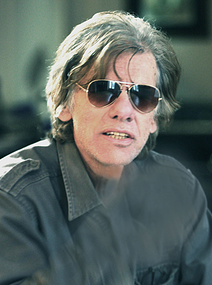
Image: Courtesy Roy Stuart's website.
French cultural space, ARTE Creative, is featuring a documentary titled “Fantasies, sex, fiction and temptations.” The film explores the aesthetic, sociological and psychoanalytical threads informing sexual fantasy and desire (see New Institute of Sexology Celebrates History of Erotic Art, Film, Photography).
Director Laure Michel questioned several artists about their sexual imagination, fantasies and narratives. Among those interviewed are French actor Jean-Marc Barr, Spanish actor Sergi Lopez, American photographer Roy Stuart, cartoonist Nine Antico, Japanese designer Atsuko Kudo and American romance-novelist Sylvia Day.
Of particular interest in this group is provocative photographer Roy Stuart, whose work has been captivating (and repelling) since the 1970’s. Stuart, who enjoys a cinematographic background with minor parts in The Godfather Part II and some X-rated films, became intrigued by cinematographic techniques and, especially, the use of lighting for the creation of photographs.
His photographs seem to defy the pornographic and the erotic (see Society for Women Artists’ Show Censored Over ‘Pornographic’ Painting). How? Stuart has seemingly created his own representation of feminine sexuality, as a man, distinct from romantic notions of the subject.
He is interested in the way people might behave if there was an absence of taboos, progressing towards a space where men and women can share the same sexual license.
The artist’s photographic sessions were often filmed, which seems to be how he has achieved his special aesthetic. The footage was later edited down and compiled into a film series titled The Glimpse Videos. As part of his collaboration with ARTE, Stuart composed a short narrative film, interlacing some of this past footage. The work brings to light quotidian dynamics between men and women, and women among themselves, that does indeed border on the pornographic, without quite crossing that subtle boundary.
Previously, Stuart produced the films Giulia, in 1999, and The Lost Door, in 2008, also an assemblage of footage from photo shoots.
Nonetheless his artworks beg the question: Are his models women-objects? Is his work actually subversive? Where does love fit into his representation of sexuality? And why is his work not associated with pornography?